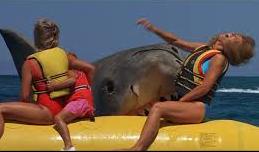A global marketplace essentially demands Hollywood build franchises and make sequels, with their relatively controllable advertising costs, and that’s not necessarily a bad thing. While the long-ago serials were B-movie productions, cheaply made things, and sequels from the ’70s through the ’90s usually exploited a product rather than nurtured it, by the new century no expense was spared to make several highly entertaining variations on a theme. That doesn’t mean success is always–or even often–achieved, but that’s the intention. A little from Matthew Garrahan of the Financial Times about the unsure early attempts to build can’t-miss franchises:
“While the current vogue for producing and maintaining franchises is relatively new in Hollywood, the industry has a long history of producing sequels. In the 1930s, episodic movie ‘serials’ such as Buck Rogers and Flash Gordon drew cinema audiences week after week. The horror movies produced by Universal Studios in the same decade also spawned numerous sequels, such as Bride of Frankenstein and Dracula’s Daughter. In the decades that followed, the biggest studios produced countless genre movies — comedies, westerns, musicals, gangster films — featuring stars such as James Cagney, Fred Astaire, John Wayne and the Marx Brothers, in which the lead actor would often play variations on the same character.
The paradigm shifted in the 1970s, when The Godfather: Part II became the first sequel to win best picture at the Academy Awards. But, far from ushering in an era of critical excellence, the studios saw instead an opportunity to squeeze their successes for all they were worth, spawning a catalogue of inferior follow-ups to hit films over the next 20 years. The blockbuster success of Steven Spielberg’s 1975 Oscar-winning Jaws, for instance, spawned four sequels, each worse than its predecessor (Spielberg wisely declined to be involved in any of them), culminating in the appalling Jaws: The Revenge (1987) regarded widely as one of the worst films ever made. ‘I’ve never seen it, but by all accounts it’s terrible,’ Michael Caine, the film’s star, once said. ‘However, I have seen the house it built and it’s terrific.’
In the 1980s and early 1990s a clear trend for sequels had been established, particularly with action films. Assuming the first film was a success, a second could be produced using essentially the same plot but in a different setting.”
Tags: Matthew Garrahan

